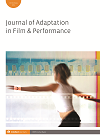
Full text loading...
Fumiyo Kouno's two-part manga series Hi no tori (2014) and Hi no tori 2 (2016) documents the story of a cockerel's search for his missing wife in the months and years following '3.11', the Triple Disaster of 11 March 2011, consisting of the Great East Japan Earthquake, tsunami and nuclear meltdown at Fukushima Daiichi Nuclear Power Plant. Both Hi no tori and Hi no tori 2 possess an unusual layout; they are comprised of various elements, including drawings, prose, poetry, statistical data, maps and commentary by the artist. This article argues that in its unique presentation of visual and textual elements, the Hi no tori series employs the medium of documentary comics to negotiate the complex critical spaces in between fiction and nonfiction, past and present, presence and absence, visibility and invisibility and, importantly, between forgetting or the fading of memories (fūka) and reconstruction (fukkō). It examines the Hi no tori series as an adaptation within the medium of comics towards a more accurate and ethical representation of 3.11 and its aftermath.

Article metrics loading...

Full text loading...
References


Data & Media loading...

Publication Date:
https://doi.org/10.1386/jafp_00004_1 Published content will be available immediately after check-out or when it is released in case of a pre-order. Please make sure to be logged in to see all available purchase options.